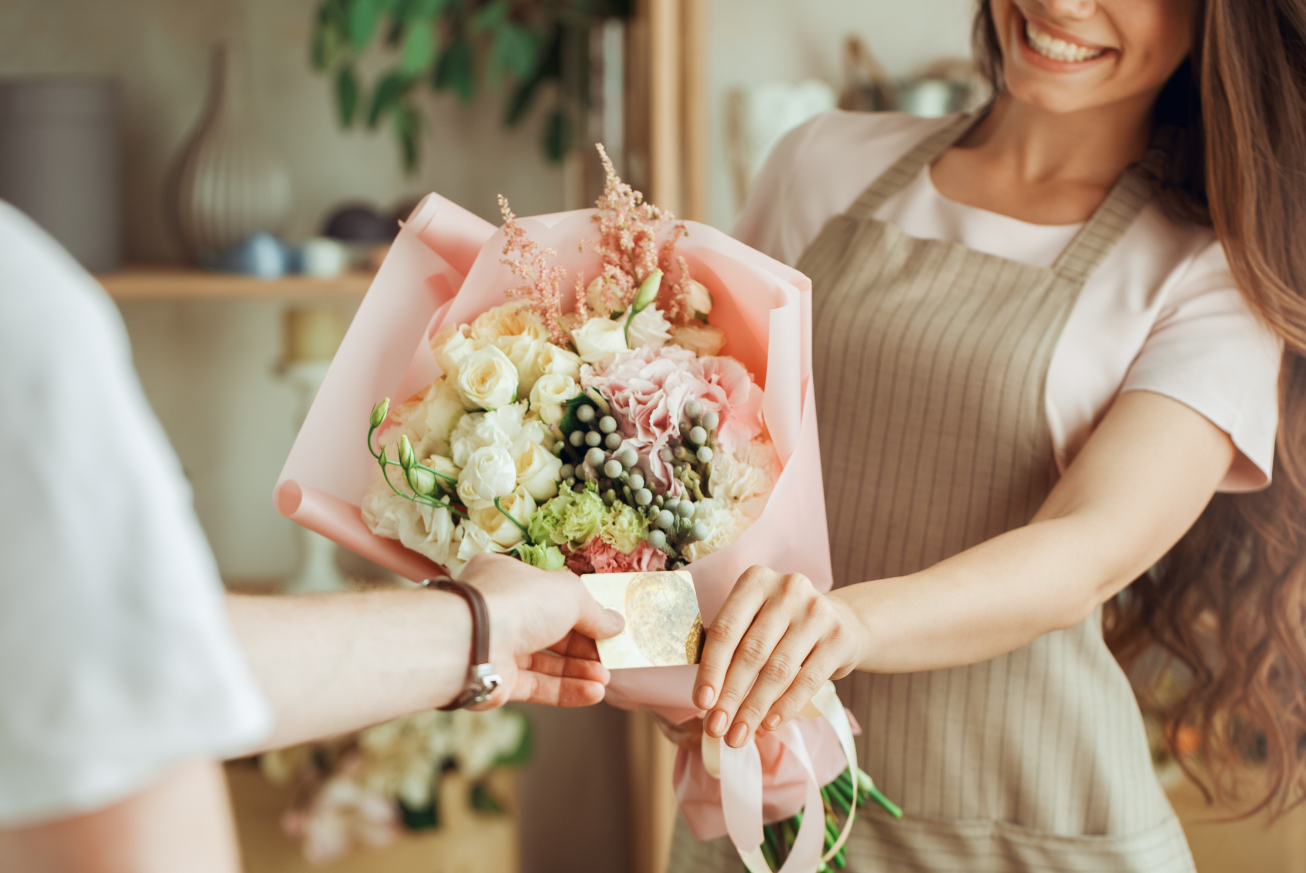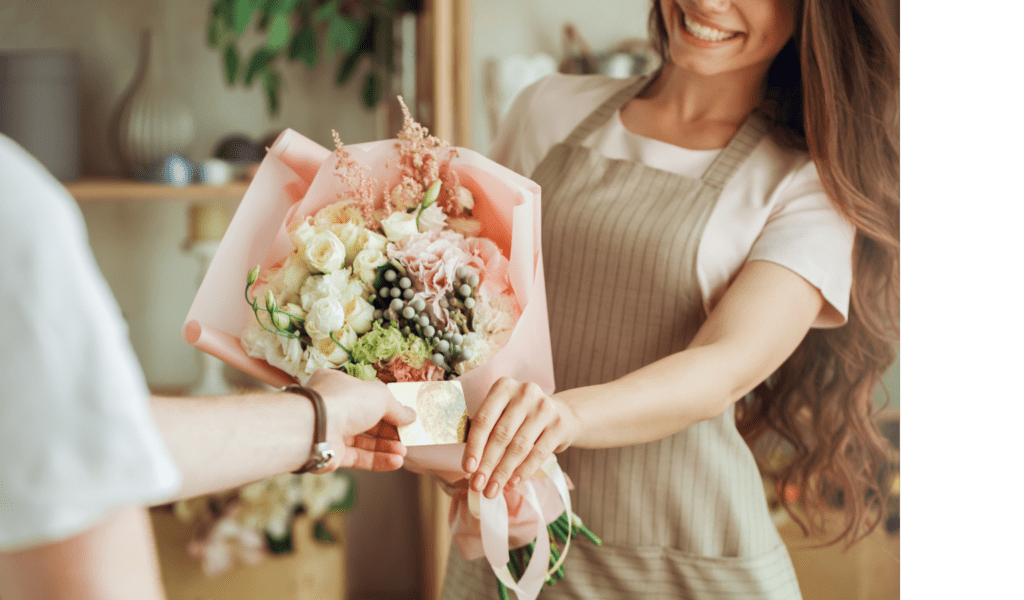Sustainable Floristry: Eco-Friendly Practices for Modern Florists

As consumer demand for sustainability grows, florists are rethinking their business practices to minimize waste, reduce their carbon footprint, and embrace eco-friendly alternatives. Customers are becoming more mindful of how flowers are sourced, arranged, and packaged—leading to a shift in the floral industry toward sustainable floristry.
For retail florists, sustainability isn’t just a trend; it’s an opportunity to enhance business practices, attract environmentally conscious customers, and create long-lasting, beautiful arrangements without harming the planet. In this blog, we’ll explore key eco-friendly floristry practices, including foam-free design, reducing floral waste, sourcing sustainable flowers, and marketing your green efforts to
grow your business.

Why Sustainability Matters in Today’s Floral Industry
The floral industry has traditionally relied on materials and processes that can be wasteful—plastic packaging, floral foam, and excessive flower waste are all major environmental concerns. By making small changes, florists can significantly reduce their impact while still delivering stunning arrangements that customers love.
💡 Did You Know?
- The floral industry generates millions of tons of waste each year, much of which comes from discarded flowers and non-biodegradable materials.
- Traditional floral foam (used in many arrangements) is a microplastic that does not break down in the environment and is harmful to waterways.
- Many cut flowers travel thousands of miles before reaching florists, contributing to carbon emissions.
By adopting sustainable floristry practices, florists can reduce their footprint and appeal to the growing market of eco-conscious customers who are actively seeking greener options.
Sustainable Floristry Tip #1: Foam-Free Floral Design Techniques
One of the biggest shifts in sustainable floristry is the move away from traditional floral foam. While it has been a staple for many years due to its convenience, floral foam is non-biodegradable and contains toxic chemicals.
🌿 Eco-Friendly Alternatives for Foam-Free Sustainable Floristry:
✅ Chicken Wire & Reusable Mechanics: Secure flowers in place using chicken wire or reusable grids in vases.
✅ Moss & Natural Materials: Wet moss provides a natural, biodegradable base to keep flowers hydrated.
✅ Flower Frogs (Kenzan): These metal pins, commonly used in Ikebana, hold stems in place without waste.
✅ Recycled Paper & Fabric Wraps: Instead of plastic wraps, opt for compostable or reusable wraps that enhance the look of arrangements.
💡 Sustainable Tip: Start small—try one or two foam-free techniques and introduce them to customers as part of your eco-friendly initiative.
Sustainable Floristry Tip #2: Reduce Floral Waste in Your Flower Shop
Floral waste is one of the biggest sustainability challenges for florists. Flowers that don’t sell or wilt too soon often end up in the trash, leading to unnecessary waste.
🌿 How to Minimize Floral Waste:
✅ Offer Dried & Preserved Floral Arrangements – Repurpose unsold blooms by drying them for boho-inspired bouquets and event décor.
✅ Compost Flower Waste – Instead of discarding wilted flowers, compost them to create nutrient-rich soil for future plant growth.
✅ Sell Leftover Stems as Budget Bouquets – Bundle remaining flowers at a discounted price to maximize sales.
✅ Donate to Local Hospitals or Charities – Repurpose gently used event florals by donating them to hospitals, nursing homes, or community centers.
💡 Sustainable Tip: Create a “ReBloom” section in your shop or online store where customers can purchase discounted arrangements made from repurposed flowers.
Sustainable Floristry Tip #3: Sourcing Local & Seasonal Flowers for an Eco-Friendly Business
The journey of a flower from farm to florist often spans thousands of miles, contributing to carbon emissions and energy use. Choosing locally grown and seasonal flowers is one of the most impactful ways florists can adopt sustainable floristry.
🌿 Benefits of Locally Sourced & Seasonal Flowers:
✅ Reduces Carbon Footprint – Less transportation means lower emissions.
✅ Supports Local Growers – Helps strengthen local economies and small businesses.
✅ Fresher & Longer-Lasting Blooms – Locally grown flowers don’t spend days in transit, meaning they stay fresh longer for customers.
✅ Reflects Seasonal Beauty – Embracing seasonal trends keeps offerings fresh and exciting.
💡 Sustainable Tip: Partner with local flower farms and promote “Locally Grown” tags on arrangements to attract eco-conscious customers.
Sustainable Floristry Tip #4: Eco-Friendly Packaging for a Greener Floral Shop
Florists use a lot of cellophane, plastic wraps, and synthetic ribbons, which contribute to landfill waste. Switching to sustainable packaging enhances your brand’s reputation and aligns with customer preferences for low-waste products.
🌿 Sustainable Packaging Alternatives:
✅ Recycled Kraft Paper or Fabric Wraps – Provides a rustic, chic aesthetic while being biodegradable.
✅ Compostable Ribbons & Twine – Swap synthetic ribbons for jute, twine, or natural fiber ribbons.
✅ Glass Vases & Reusable Containers – Encourage customers to return vases for discounts on future purchases.
💡 Sustainable Tip: Offer an “Eco-Friendly Bouquet” line that uses only recycled and compostable materials.
Sustainable Floristry Tip #5: Marketing Your Eco-Friendly Florist Business
Florists who embrace sustainability should actively promote their green initiatives—customers love to support businesses that align with their values.
🌿 How to Market Your Eco-Friendly Florist Business:
✅ Highlight Sustainability on Social Media & Your Website – Create a dedicated “Sustainability” page on your site explaining your green practices.
✅ Use Eco-Friendly Hashtags – #SustainableFloristry #FoamFreeFlowers #EcoFriendlyFlorist
✅ Offer Green Incentives – Discounts for vase returns, compostable bouquet options, or BYO-container services.
✅ Collaborate with Eco-Friendly Vendors – Partner with local flower farms and sustainable brands to create unique, marketable offerings.
💡 Sustainable Tip: Create behind-the-scenes content showing your team implementing sustainable practices—customers love transparency!
The Future of Floristry is Green
Sustainable floristry is more than a trend—it’s a movement shaping the future of the floral industry. By adopting foam-free designs, reducing waste, sourcing local flowers, and switching to eco-friendly packaging, florists can reduce their environmental impact while attracting customers who value sustainability.
At BloomNet, we support florists in making their businesses more sustainable and profitable. Whether you’re just starting your eco-friendly journey or looking for new ways to reduce waste, implementing even a few of these tips can make a huge impact.
🌿💐 What’s one sustainable change you’ve made in your floral business? Share in the comments!
